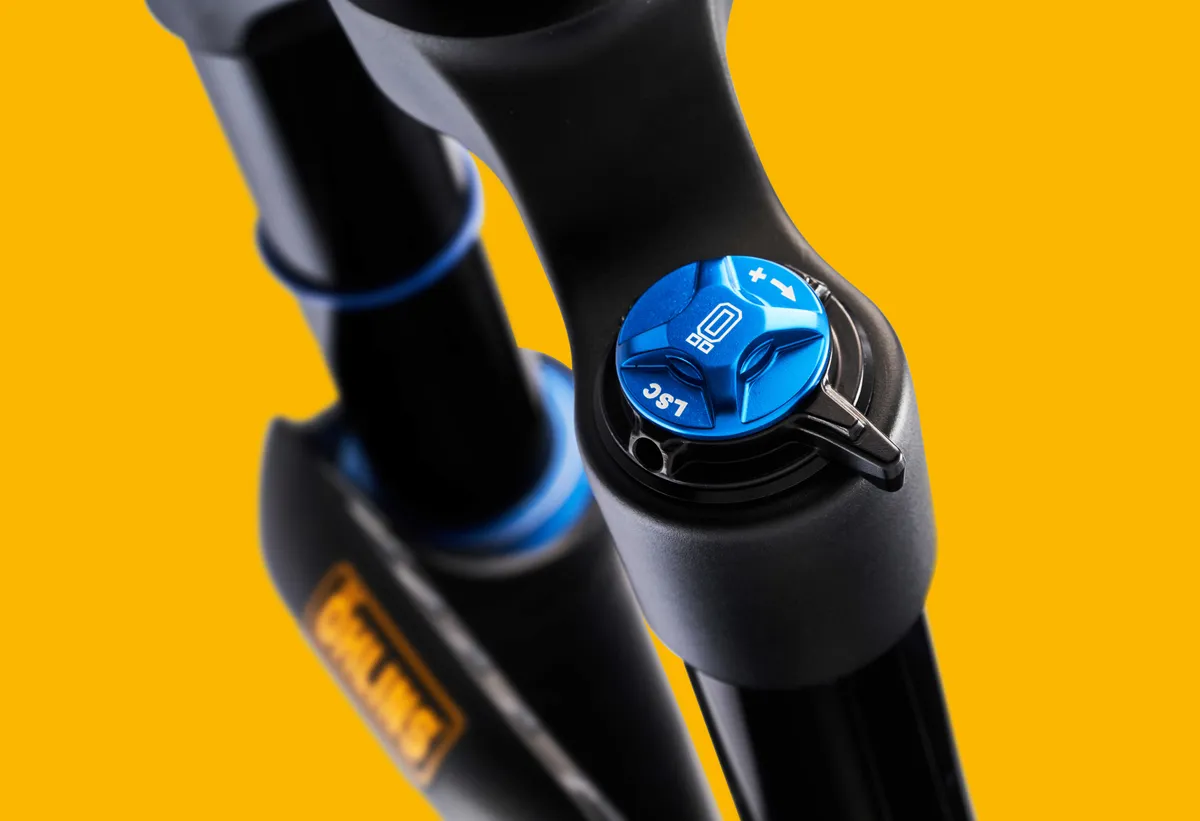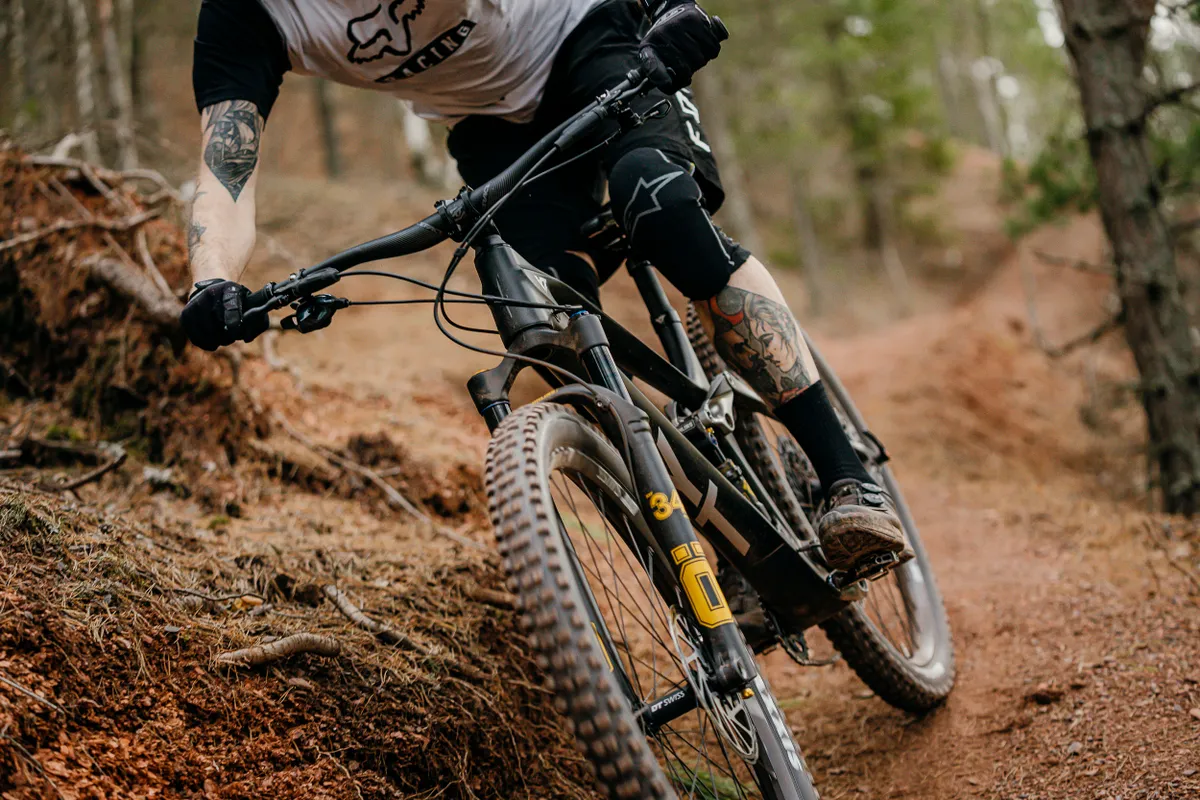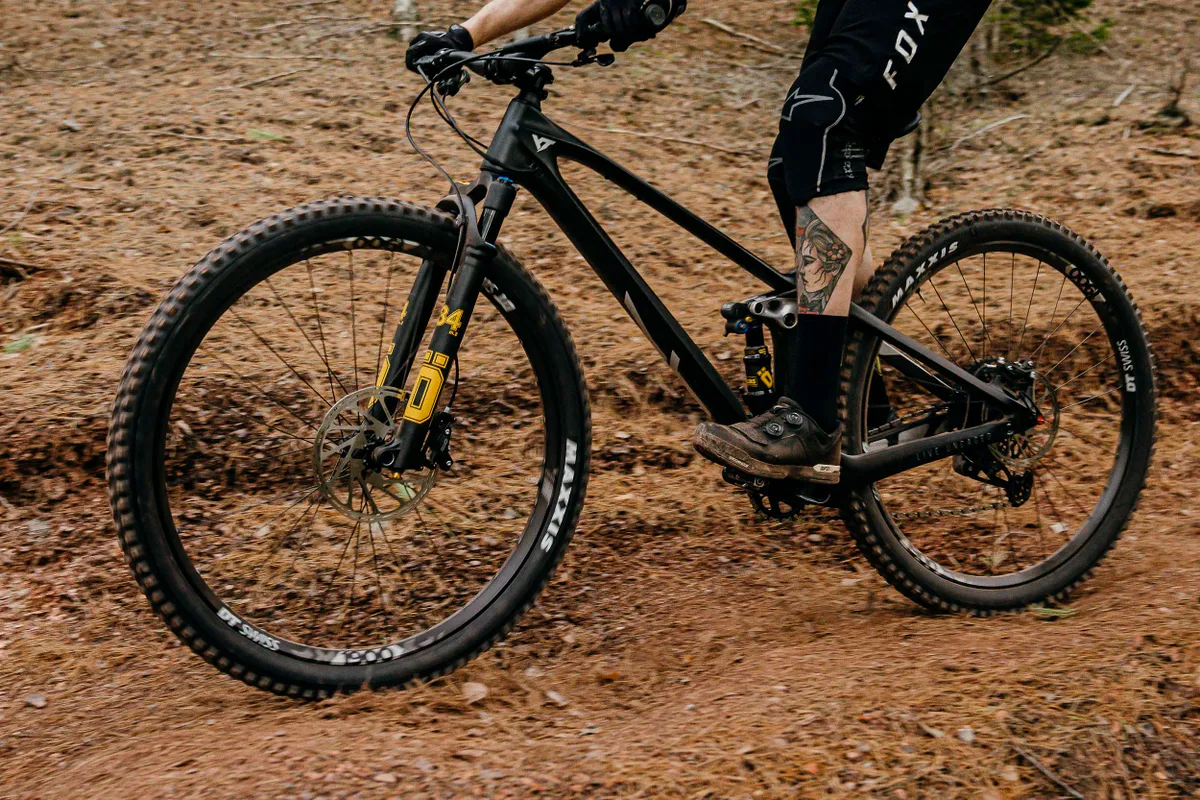The new Öhlins RXF34 m.2 is a new 34mm stanchion fork designed to replace the existing RXF34 trail/all-mountain fork. For this new model, Öhlins has dropped the 140mm and 160mm-travel options by offering a 120mm and 130mm-travel fork dedicated to the growing aggro cross-country – or, if you prefer, downcountry – trend.
As well as a new travel range, the RXF34 m.2 sports a new chassis, air spring and updated damper. Prices come in at £1,185 / $1,180 USD / €1,294
While there isn’t a specific race market for this type of riding, Öhlins claims to have developed it with the same high-end performance as its race products, including its highly successful Öhlins DH38 m.1 fork, used by Loïc Bruni, and the newly released RXF38 m.2 enduro fork.
Öhlins RXF34 m.2 specification and details

The new fork RXF34 m.2 is designed around a new chassis, and Öhlins claims to have tailored the flex pattern for short-travel trail riding. The fork is designed to combine stiffness for point-and-shoot steering precision with lightweight construction to make it competitive against its rivals.
Our 130mm test fork, with a 185mm steerer length, star nut and axle, weighed in at a competitive 1.74kg. For reference, the RockShox SID Ultimate, which sports 35mm upper tubes, weighs in at 1,610g (120mm travel), while Fox’s 34 SC weighs 1,650g (though the non-Step Cast version of the 34 will weigh a little more).
Öhlins has used closed-end lower legs, which it says improve impact resistance and stiffness to provide better handling. Also, this design increases the air volume in the lower legs. That means the air in the lower legs doesn’t affect the progression of the fork deep in the travel as much, and you can control the support more from just the air spring.
The fork is available for 29in wheels only, and has a 44mm offset and a 160mm post-mount brake mount. The maximum rotor size is 203mm.
It also features the same floating-axle design as the RXF36 m.2 and RXF38 m.2. That aims to reduce friction by ensuring the lower legs are correctly aligned with the stanchions regardless of different manufacturing tolerances in hub widths.

OTX18 damper

With weight savings playing a bigger role in the fork design and because it doesn’t need to handle such hard impacts and high shaft speeds, Öhlins decided a one-tube damper could manage the damping needs rather than the twin-tube dampers it uses in its gravity-focused forks. Hence the ‘OT’ naming convention for ‘one-tube’ rather than the ‘TT’ for 'twin-tube'.
Öhlins claims with this new damper, it was able to achieve a weight saving of 27 per cent over the TTX18 damper.
It still features external high- and low-speed compression and rebound damping. There are 15 low-speed compression and rebound clicks, two high-speed settings and a climb mode. Öhlins states all of these settings are usable, and the range of adjustment isn’t so extreme that the fork becomes dangerous or unrideable.
The damper for the RXF34 m.2 is claimed to provide a better pedalling platform than its longer-travel cousins. Still, Öhlins tells us it has spent a lot of time trying to achieve the best balance of traction, control and weight.
Öhlins has also produced a ‘settings bank’, which it distributes to its service partners. If you need to re-tune the damper, Öhlins has a bank of shim stacks pre-determined that should work for riders who lie outside of the stock configuration or want something different.
New air spring
For the RXF34 m.2, Öhlins developed a new air spring, which forgoes its three-chamber design for a simpler two-chamber version and spring volume spacers to increase progression. This means the system is more like other forks on the market.
You add air to the positive chamber to increase the spring rate, which self-equalises the negative chamber. That makes for a lightweight spring ideal for an aggro XC fork.

Öhlins says it designed the negative chamber for fast trail riding, where it wanted to keep good small-bump sensitivity for the beginning stroke. End-stroke ramp-up can be tailored with spring spacers, where it’s possible to install up to five or six spacers depending on travel.
Reducing friction was a crucial factor in the new spring. Öhlins was keen to point out it worked hard on the spring’s surface and the seals to minimise breakaway force and friction as much as possible.
Initial ride impressions
We’ll have a review of the fork soon, but here are a few of my thoughts after some initial rides.
In testing, I've found the fork drops into its travel easily, and that initial sensitivity through the first third of its travel helps to generate plenty of traction. Despite that suppleness, it won't use up the middle part of its travel too easily, and manages to still feel supportive when loading the bike through a turn or up the face of a jump.

The RX34 m.2 remains high enough in its travel to keep the front end feeling confident on rougher and downhill trails. Still, it dramatically softens the square-edge hits from roots, rocks and holes on the trail. Rugged bike park red runs and natural off-piste tracks are dispatched with control and composure.
Don’t expect it to ride like a 150mm fork, but it’s still impressive in chunky terrain for its travel. I used three tokens in the 130mm-travel fork, and progression was close to spot-on, where I managed to get almost full travel without any harsh bottom-outs.
When riding flowing trails, that support enables you to help pump the bike to maintain and generate speed. The range of low-speed compression damping was very usable, and turning the dial made for useful adjustments.
For high-speed flow trails and easy jump lines, I wound the low-speed compression on around 10 of the 15 clicks, which allowed me to feel committed to hitting turns at speed.

I never found the chassis limited the fork’s performance, or that it was overly flexible for its use. I've been impressed with RXF34 m.2 so far and look forward to putting it through its paces more to discover its limits and how it compares to similar offerings.
